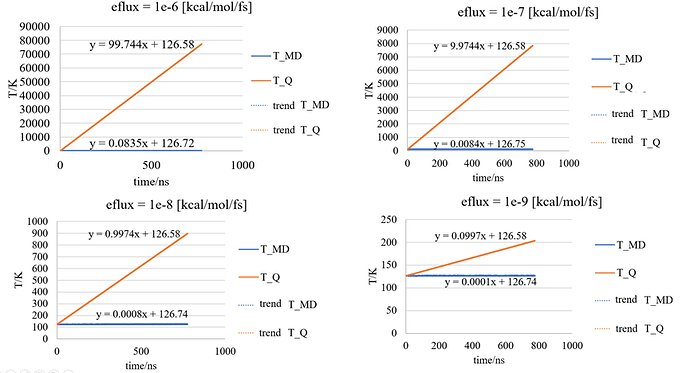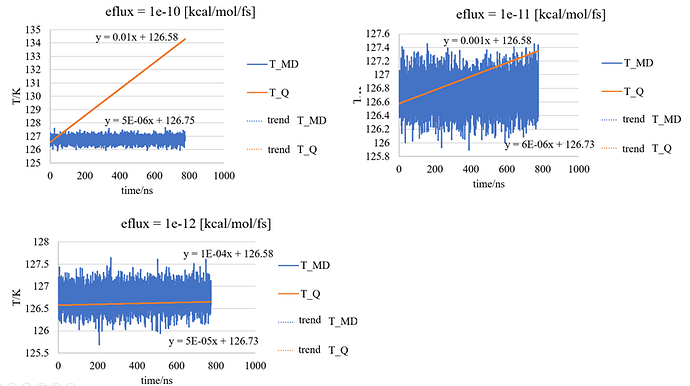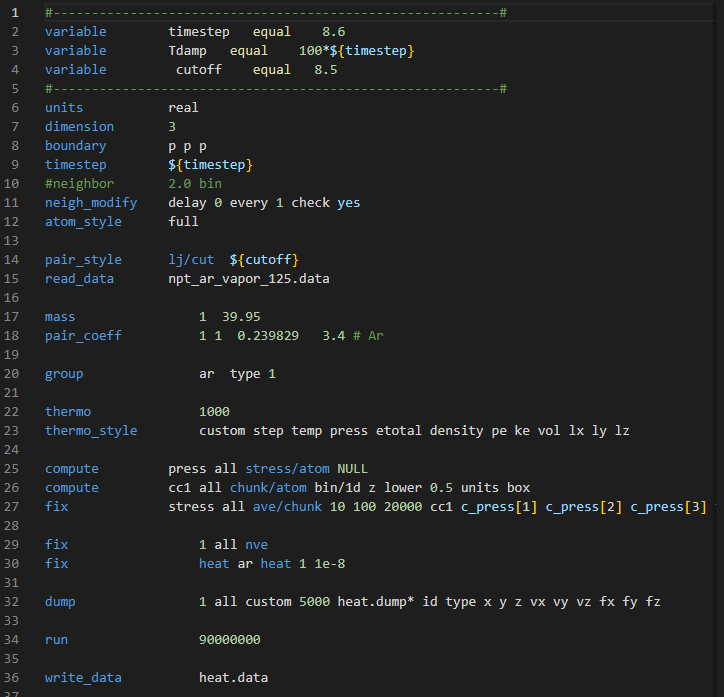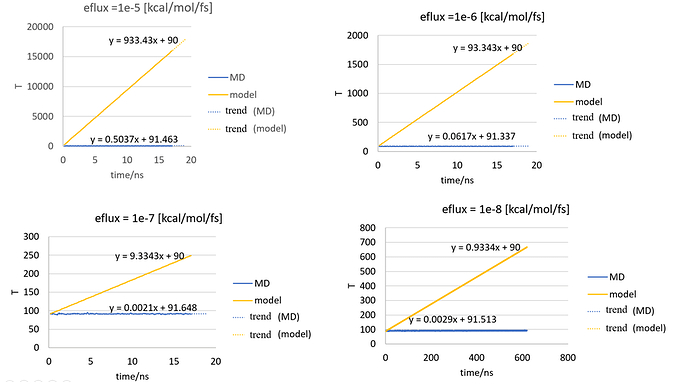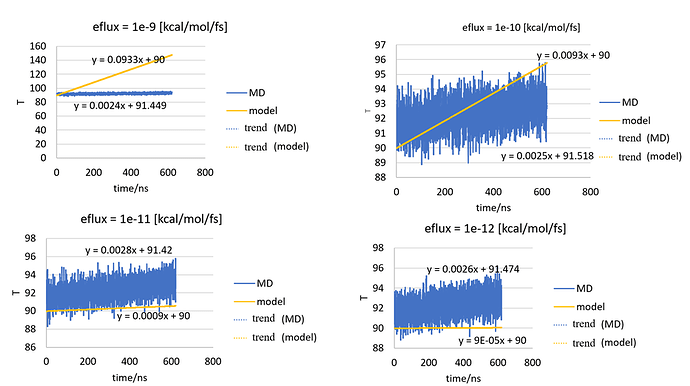Using the model to validate the simple heating simulation in LAMMPS revealed a significant difference in the heating rates between the two. The heating command used in LAMMPS is ‘fix heat’.
- Using LAMMPS to simulate heating process of vapor argon from 125K.
In the first stage, 4000 argon atoms are equilibrated at 125K in the NPT ensemble(set 1atm).
In the second stage, all argon atoms in the equilibrated vapor argon system are heated under the NVE ensemble, using the heating command ‘fix heat ar heat 1 eflux’ (where eflux=1e-8[kcal/mol/fs]).
The units used in this simulation are in ‘real’ units, so the unit of ‘eflux’ should be [kcal/mol/fs]. The system temperature T_MD at different time is obtained from the simulation results. - Constructing model to validate MD simulation.
Q [J/s]=m_Arc_pvd(T_model)/dt
where m_Ar [kg]=0.3995[kg/mol]*4000/N_A, c_pv=1050[J/(kg·K)].The value of c_pv is taken at 125K.
Conversion from ‘eflux’ to Q:
Q [J /s] = eflux [kcal/mol/fs] * (particle number)/N_A [mol] * 4184 [J/kcal] * 10^15 [s/fs] - Comparison of MD and model results
The figures below show the comparison of MD (blue line) and mode (yellow line), each with different ‘eflux’ (for MD) and corresponding Q (for model). The yellow dashed line is the fitted line of the yellow solid line, and the blue dashed line is the fitted line of the blue solid line.
From Figures, The results of MD and model do not agree well.
The slope of the yellow dashed line (model) is proportional to Q and ’eflux‘.
The slope of the blue dashed line (MD) is proportional to ’eflux‘ when 'eflux‘ is large. As 'eflux‘ decreases to a certain value, the slope shows almost no change.
Comparing the slope of the yellow dashed line (model) with the slope of the blue dashed line (MD), it is found that when ‘eflux’ is larger, the slope of the yellow dashed line is larger than that of the blue dashed line. When ‘eflux’ becomes smaller, the slope of the yellow dashed line gradually approaches the slope of the blue dashed line, or even smaller than the blue dashed line.
This is a simple heating model, and I uses the ‘fix heat’ command in LAMMPS . Could the discrepancy between the heating process and the theoretical value be caused by a bug in this command?
LAMMPS Version:2Aug2023
platform: Red Hat Enterprise Linux Server, 7.5(Maipo)
In.file of lammps:
